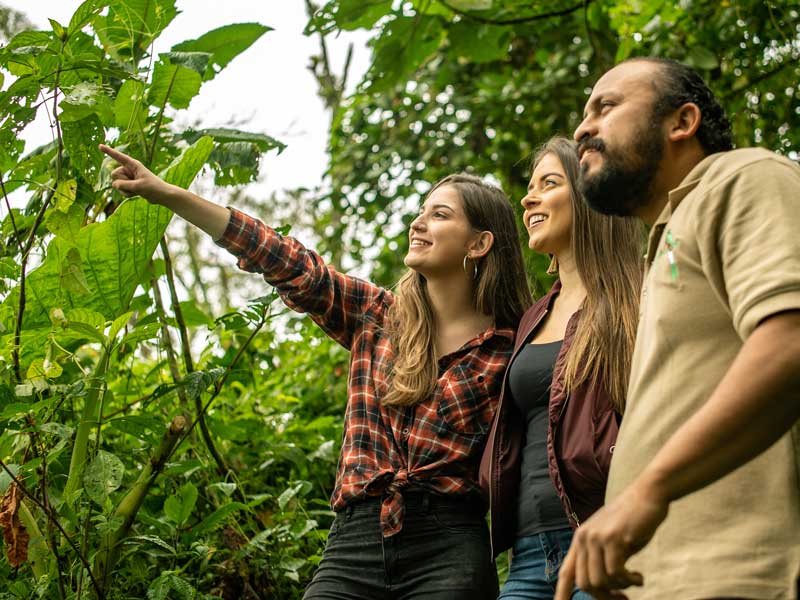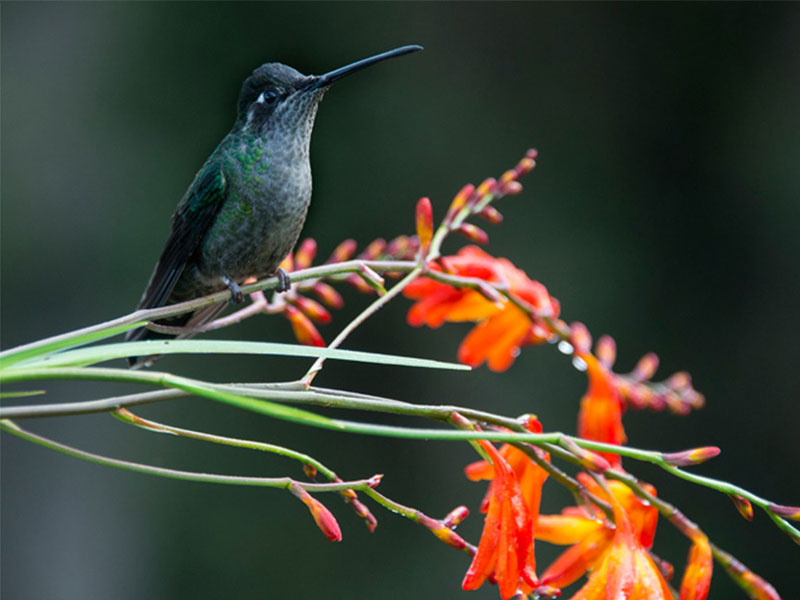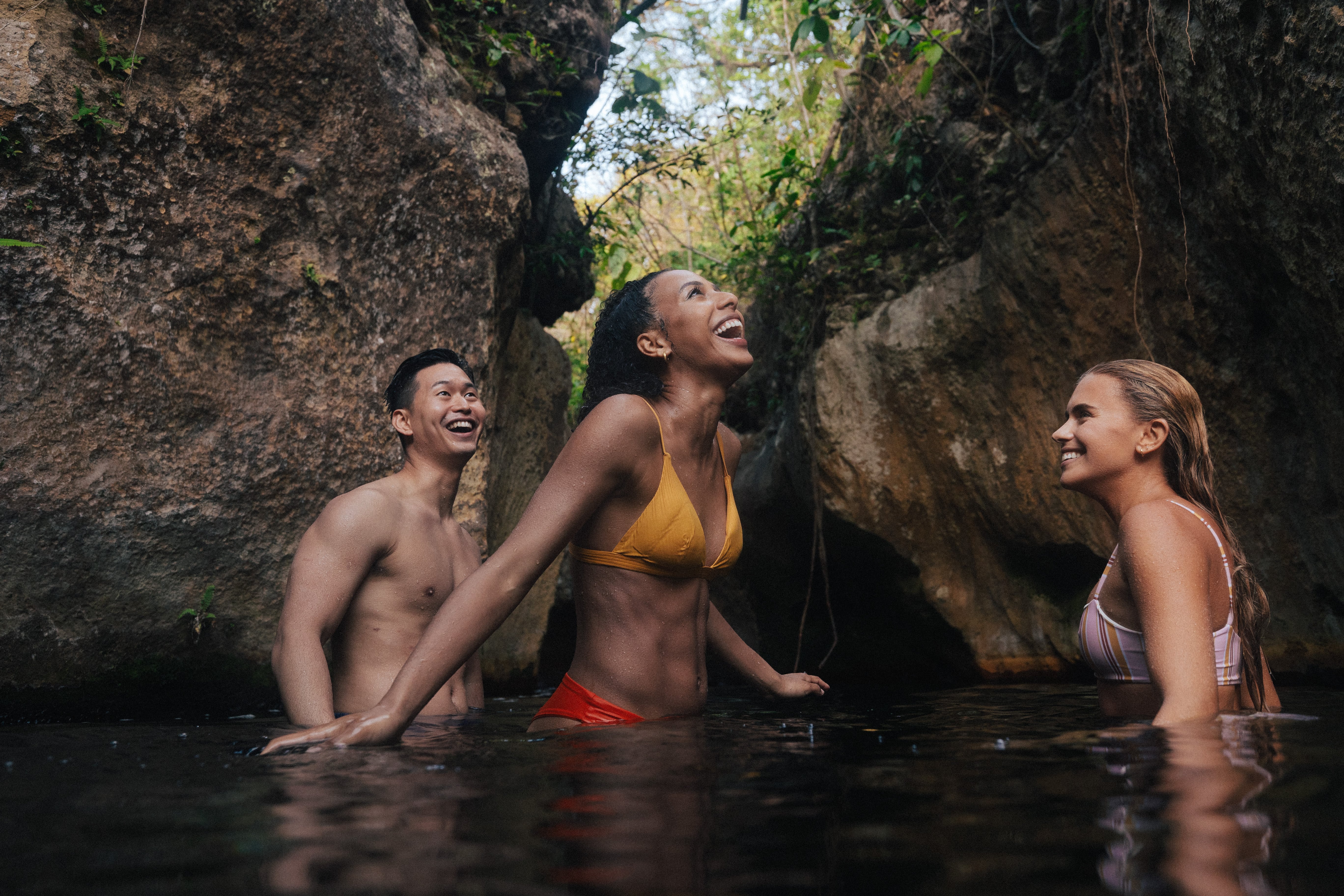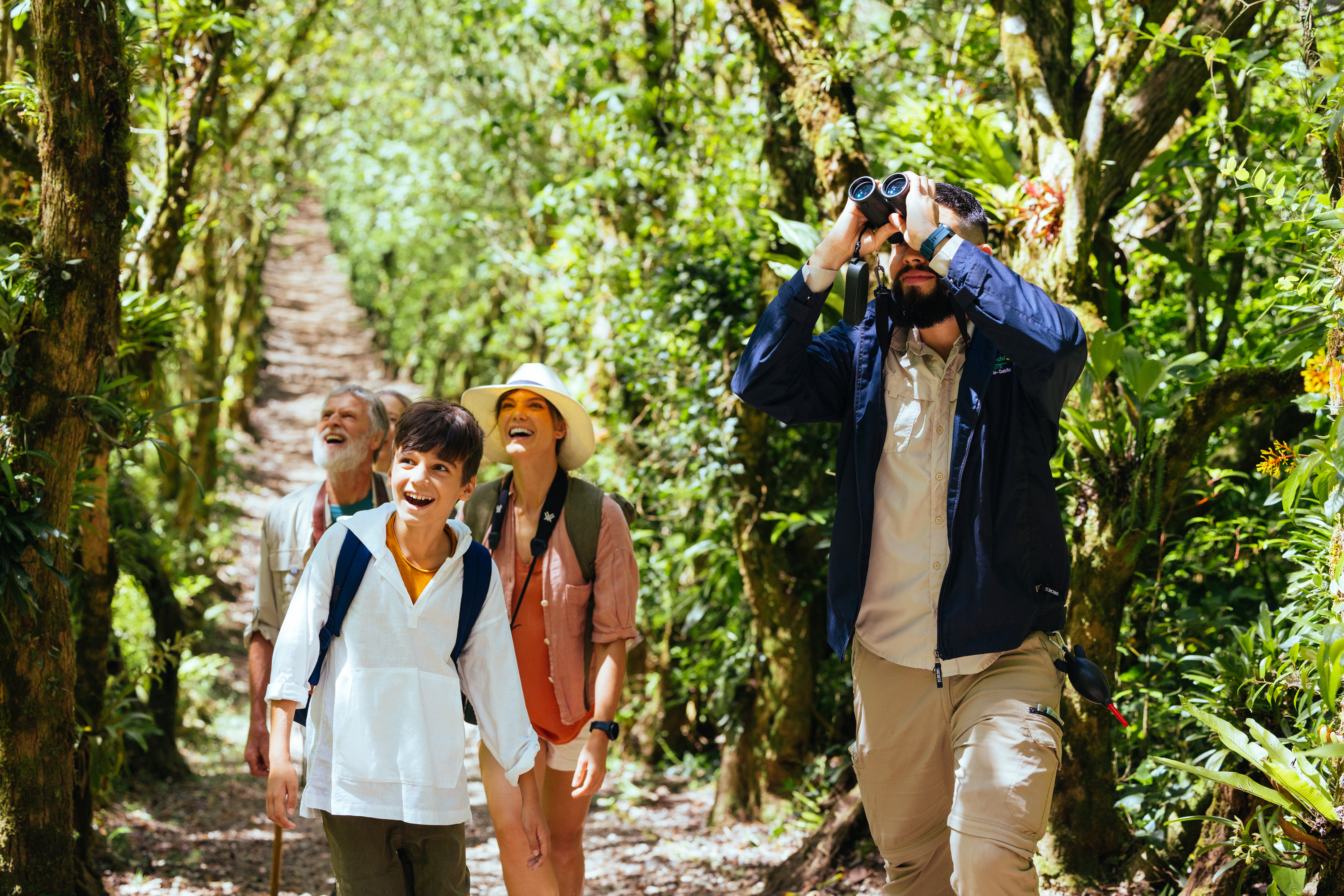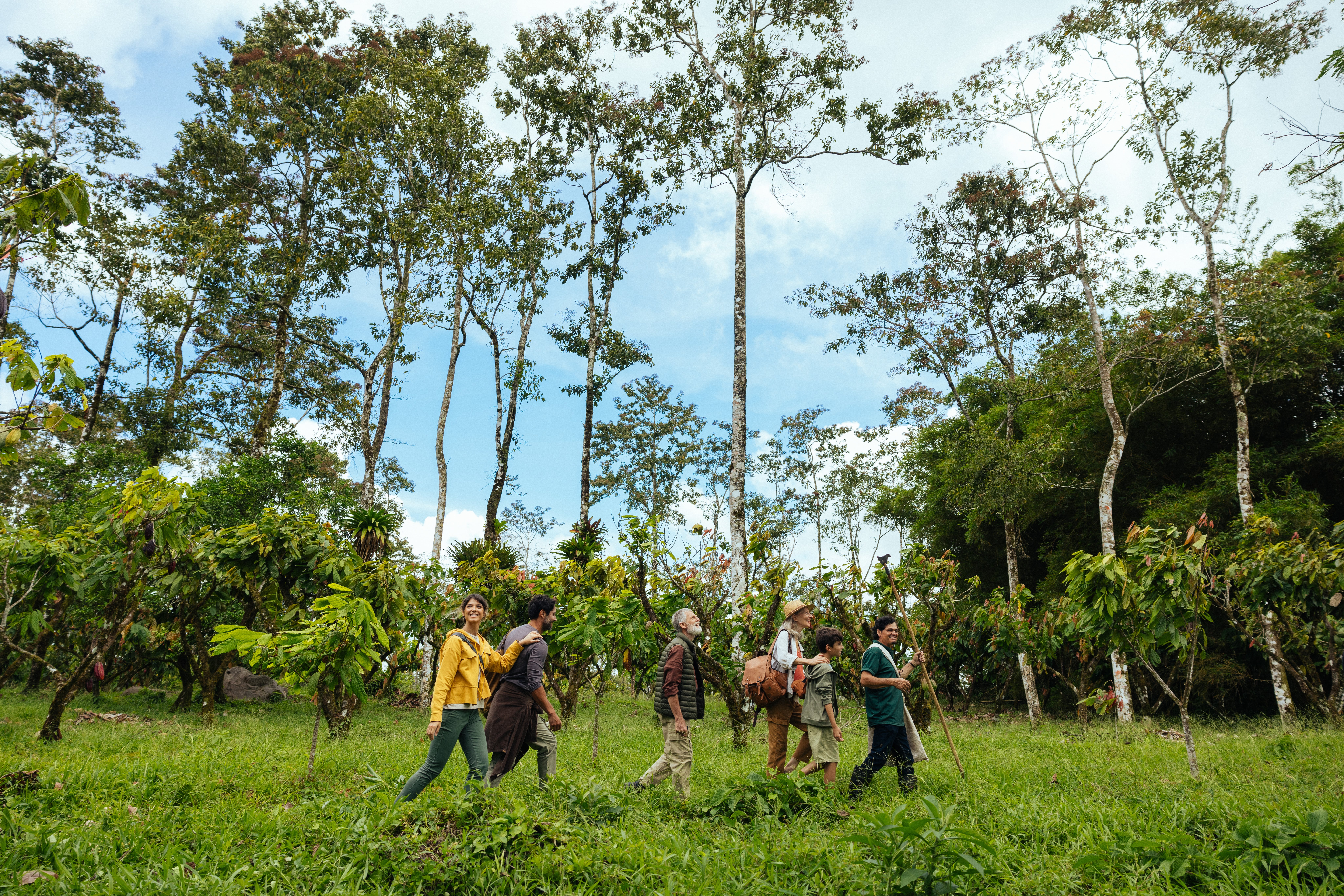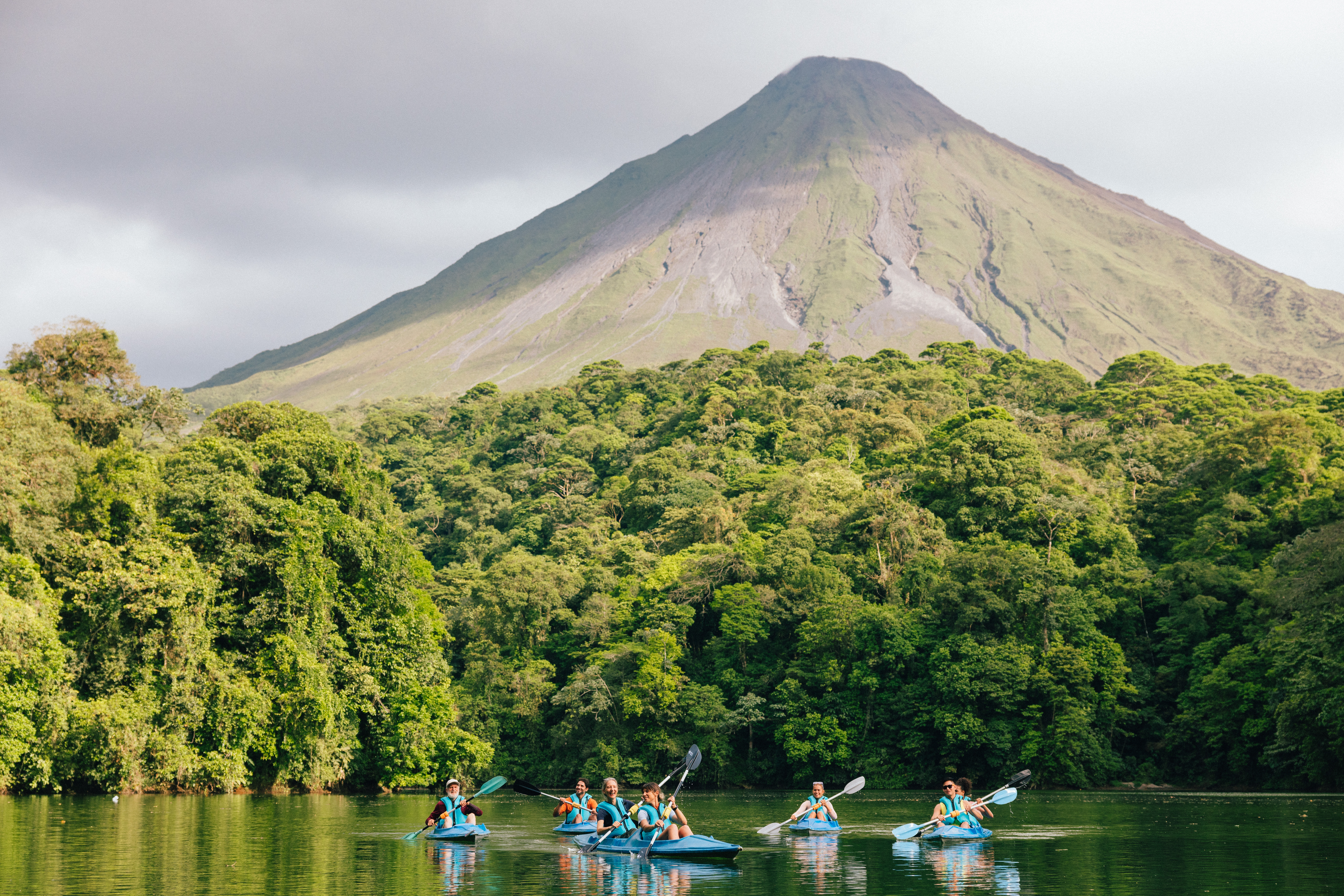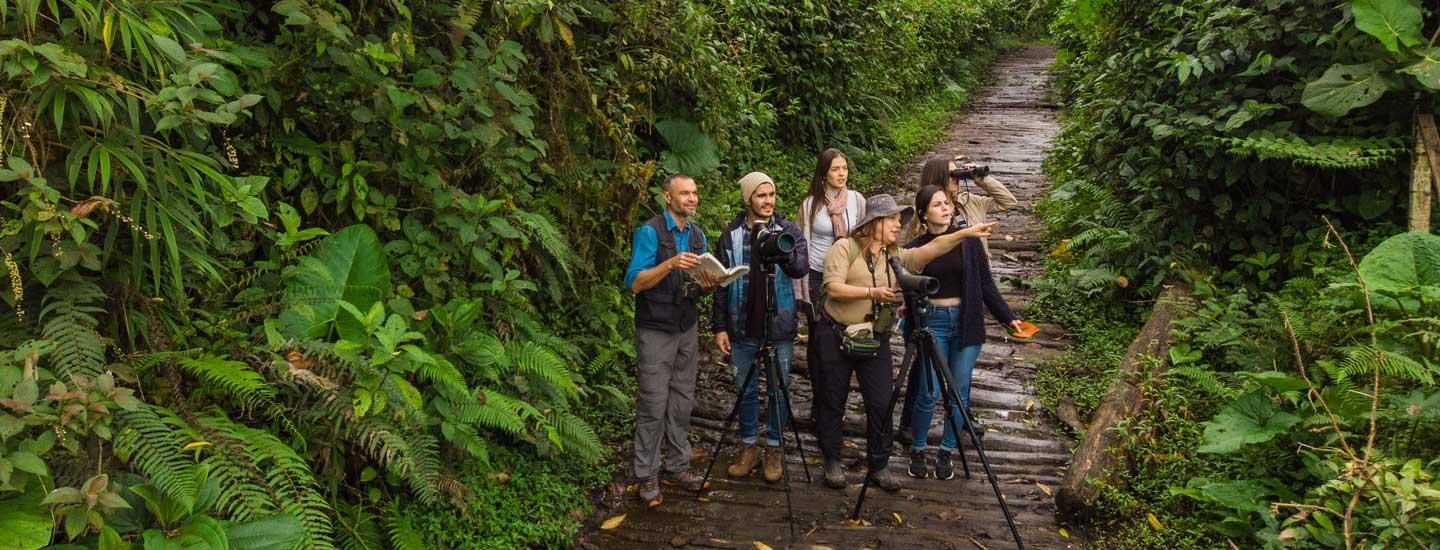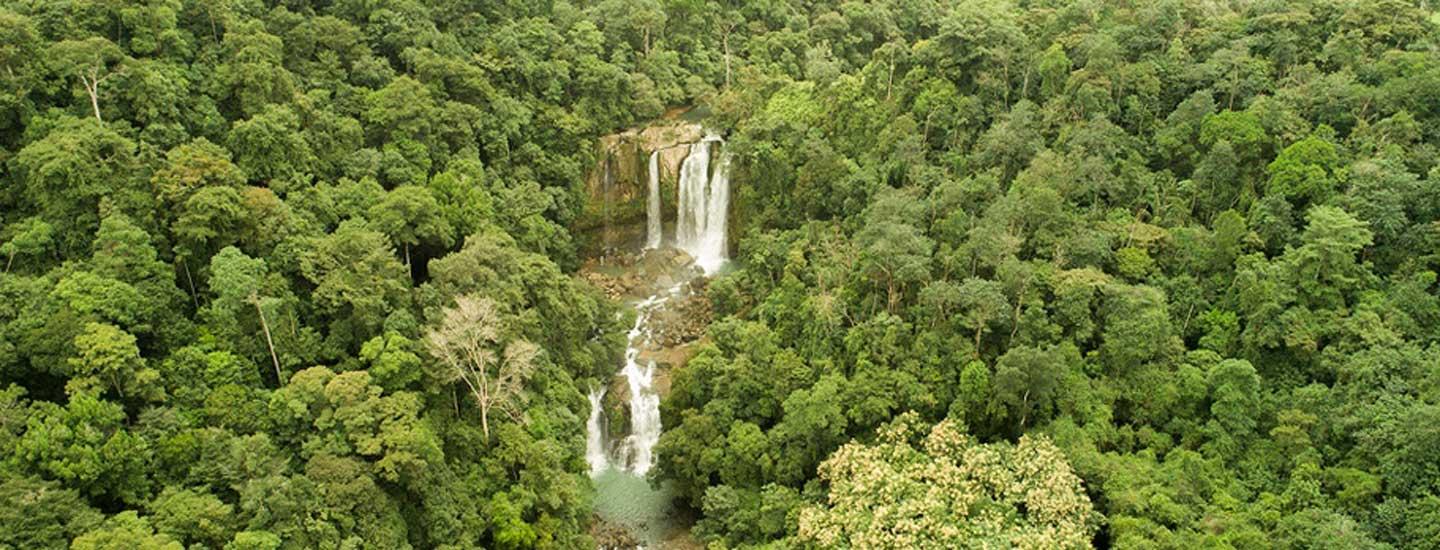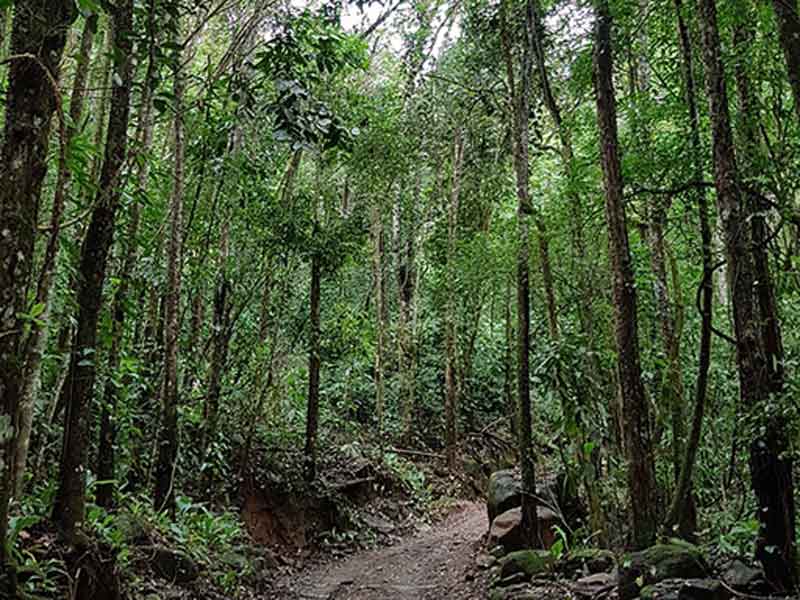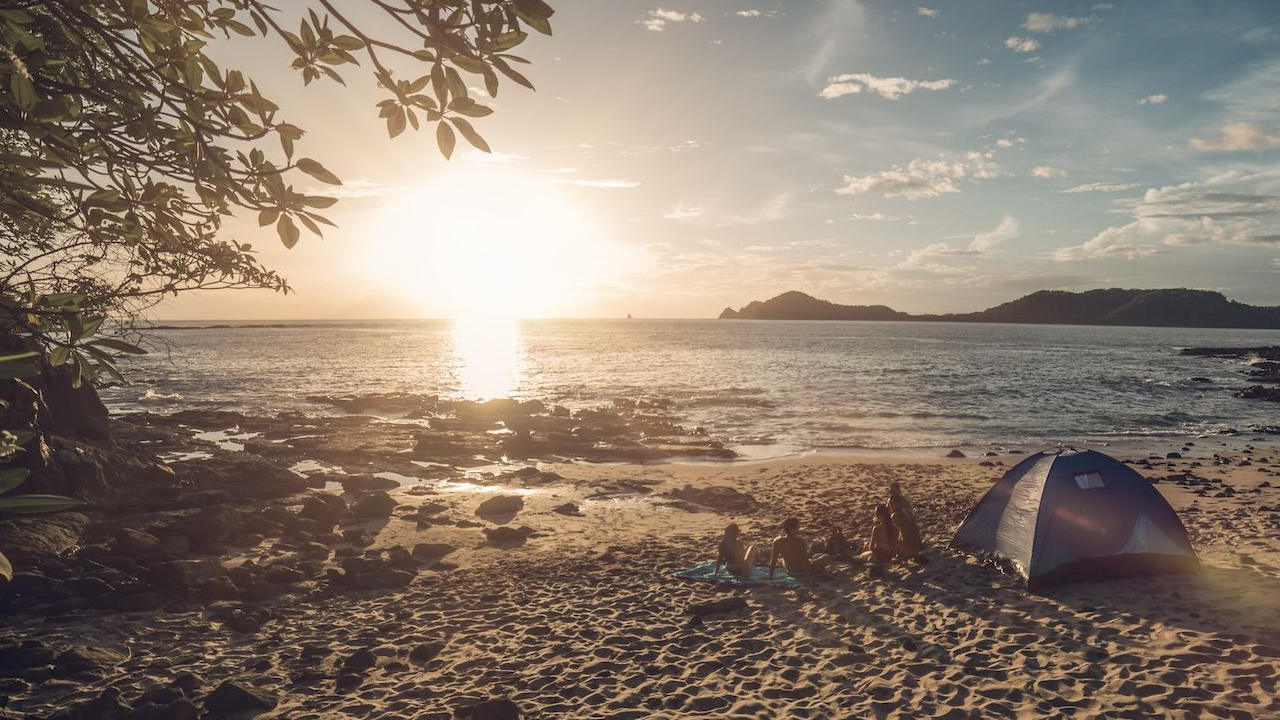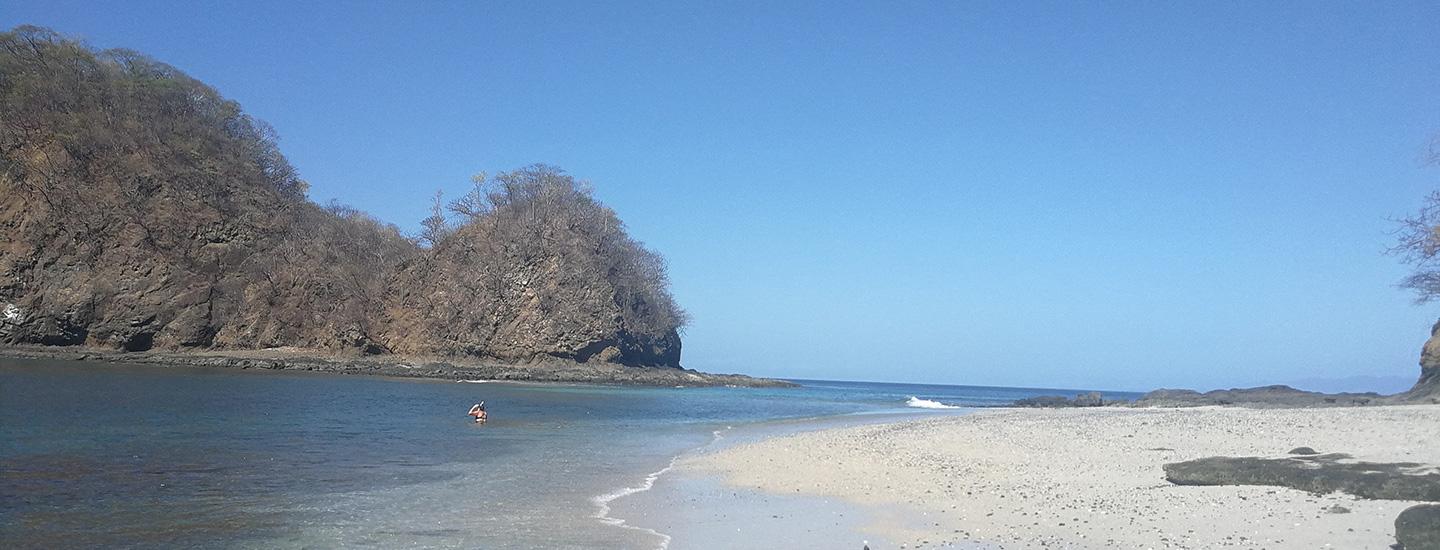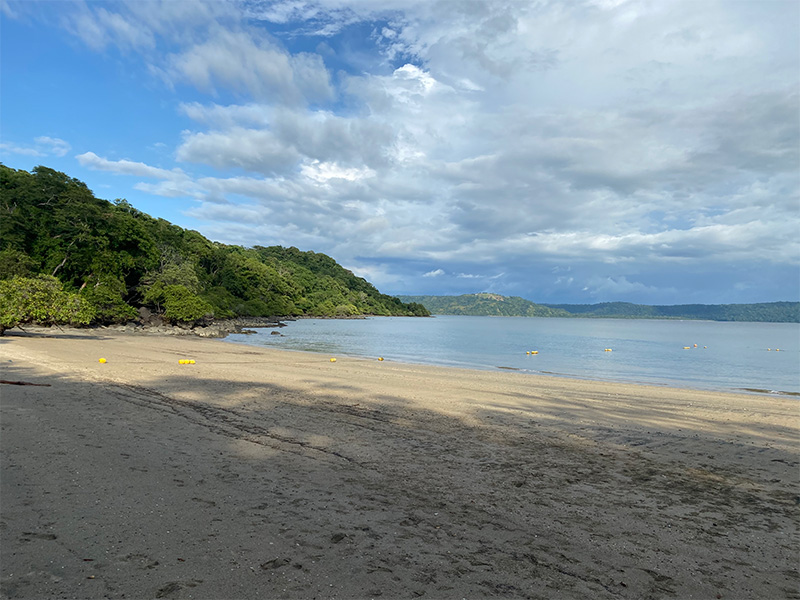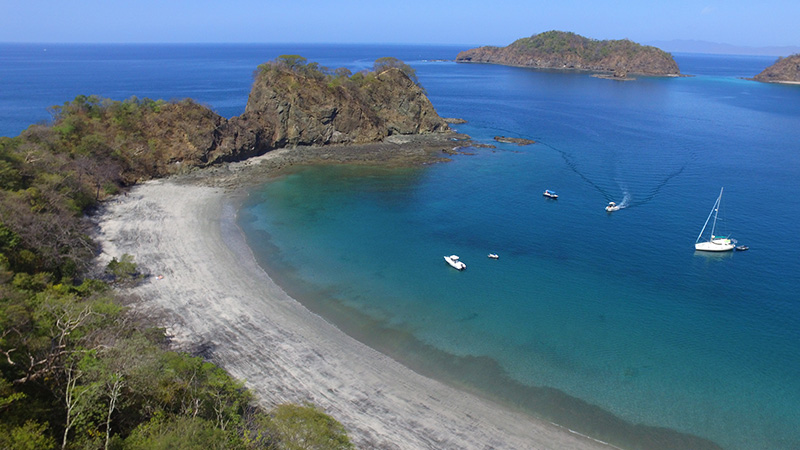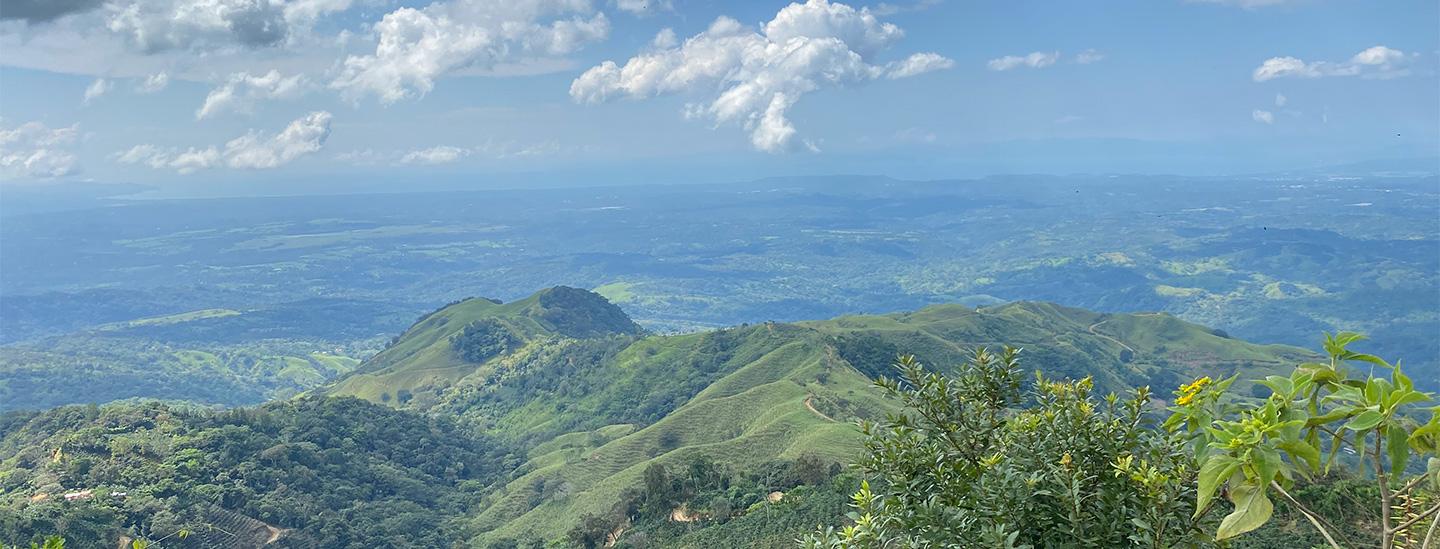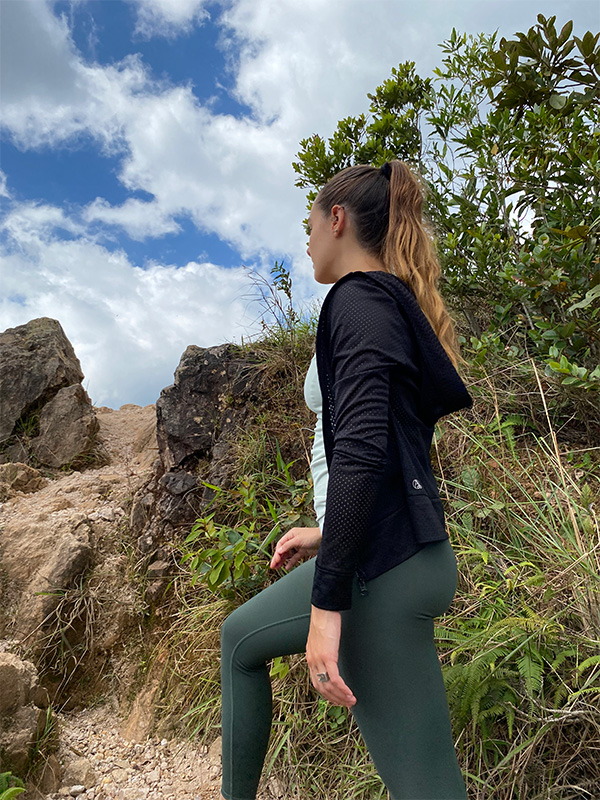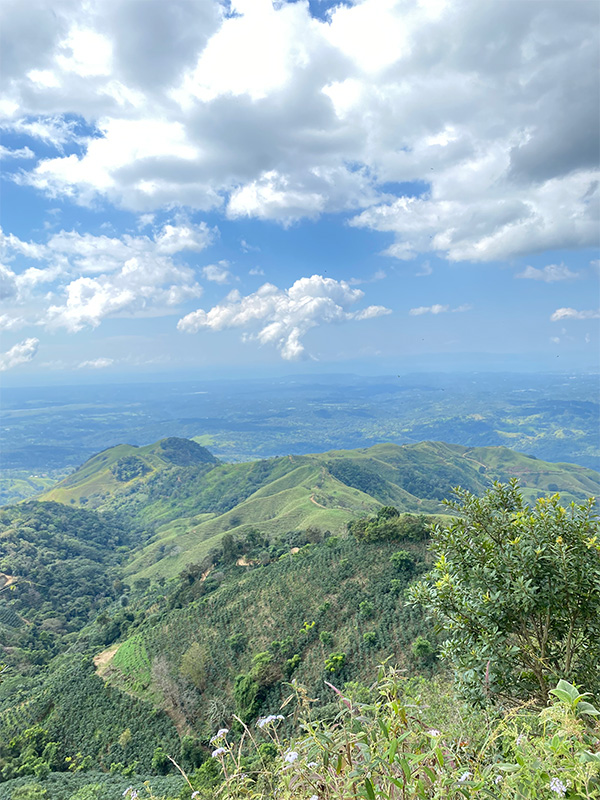If you have even a passing interest in travel, Costa Rica is most likely already on your radar. And for so many good reasons, not least of which are that it’s one of the most biodiverse places in the world and one of the most peaceful places on the planet, in more ways than one. It abolished its military in 1949, becoming one of the few sovereign nations without one. When you visit, you’ll find this diversity and peacefulness — combined with the country’s natural beauty — is unlike anywhere else on Earth. And you’ll always be doing something that speaks to these core traits, be it practicing your Spanish with locals at the neighborhood soda, hiking to a secluded waterfall, or observing endangered animals you wouldn’t get the chance to see anywhere else. The list of one-of-a-kind experiences to be had in Costa Rica is loooong — these 15 are just a start.
1. Learning just how many shades of blue there are.
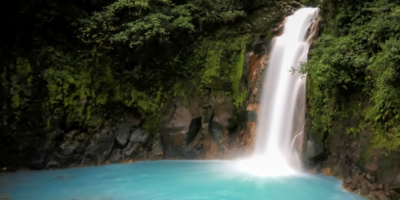
Photo: François Bianco
It’s not every day you can say you saw water change colors. But if you visit Tenorio Volcano National Park, straddling Guanacaste and Alajuela provinces in Costa Rica’s north, you can do just that.
There are tons of things to keep you busy inside the park, like hiking through emerald forests and birdwatching, but whatever you do, you’ll want to check out the Río Celeste. Its waters run through the entire park and form two unforgettable features you shouldn’t miss. The first you’ll come to is the waterfall (pictured above), but you should absolutely continue on the trail to Los Teñideros. This is where you’ll see two clear rivers come together, their colors blending into a single, dazzling sky-blue flow that gives the river its name, which translates to “heavenly blue.”
2.Eating local at a soda.

Photo: Razvan Orendovici
Skip the fancy restaurants that cater to tourists. Skip all the top 10 lists you read about online. Just head over to a soda. No, we’re not talking about some carbonated drink — sodas are local eateries run by ticos (native Costa Ricans) and welcoming of everybody.
Sometimes buffet style, sometimes by menu, a typical meal from a soda will have entradas (appetizers), platos tradicionales (traditional dishes), pasta, arroz (rice), and platos fuertes (heavy plates that feature various meats). Two of the most popular dishes are casados and gallo pinto. Casados are simple plates of white rice, meat, beans, and fried plantains, while gallo pinto is a rice-and-bean dish that’s more or less the signature meal of the nation.
3.Searching for wildlife — in the wildest place on Earth
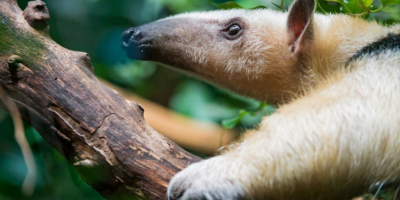
Photo: Tambako The Jaguar
The entirety of Costa Rica is teeming with wildlife, but Corcovado National Park — on the Osa Peninsula — is one of the most biodiverse places in the world.
Established in 1975, it covers an area of 164 square miles and serves as a home to more than 450 species of birds, 140 mammals, and hundreds upon hundreds of types of plants. Common animals you’ll see include scarlet macaws, white-faced capuchin monkeys, tapirs, and tamandua anteaters. Jungle cats also roam the area — jaguars, pumas, and ocelots. The elusive felines are encountered more rarely, but you’re likely to spot the tracks they leave behind.
4. Gliding through a rainforest cloud canopy on a zipline…
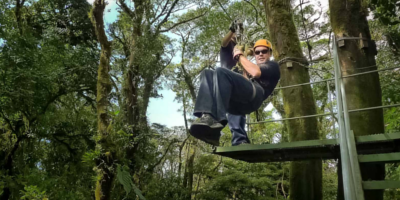
Photo: Beth and Anth
Sitting atop Costa Rica’s continental divide, Monteverde Cloud Forest Reserve is about 4,662 feet above sea level and is referred to by ticos as a “cloud canopy.” Banks of fog snag on the branches of the taller trees and the moisture trickles down, which gives the area a misty appearance and supports its diverse, fertile ecosystem. As you venture through the terrain, you’ll find yourself walking at different elevations, feeling varying temperatures, and watching as the scenery transforms.
The best way to experience Monteverde is to fly through its treetops on a zipline. There are multiple adventure parks within the forest reserve that offer zipline packages, but you might want to just opt for the longest route possible — that’d be 3,280 feet.
5. …or trekking it via hanging bridges.
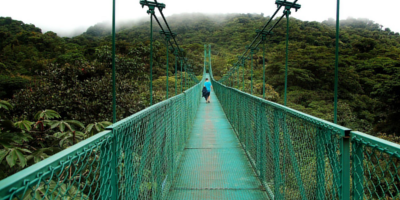
Photo: Britt Reints
Another way to traverse the Monteverde Cloud Forest is via a network of hanging bridges, and this can be just as exhilarating as a ride on a zipline. There are six bridges in total (the longest spanning 984 feet), covering a total of a mile and a half. Walking the whole thing is a proper trek and can take up to two hours.
By the end, you’ll know the tops of these trees like the back of your hand. And for a fun game, how many species of orchid can you identify? There are fourteen hundred possible answers.
6. Exploring historical ruins.
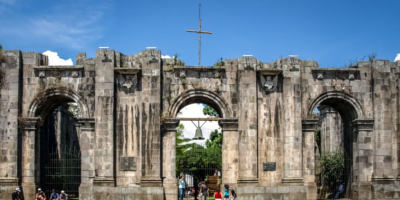
Photo: Daniel Vargas
Just 15 or so miles east of the current capital, San José, Cartago served as Costa Rica’s capital during the Spanish colonial period. As a result, in Cartago today you’ll find many significant buildings and other historical sites, some of which (like the Basilica of Our Lady of the Angels) have been carefully preserved and restored.
Others, though, show the toll taken by frequent natural disasters — earthquakes and eruptions of the nearby Irazú Volcano have left many historic structures in ruins. But in a way, this makes them all the more interesting to explore. However you choose to look into the past in Cartago, the city provides a great opportunity to rest up from your more adrenaline-packed adventures while still having a memorable excursion.
7. Riding the waves
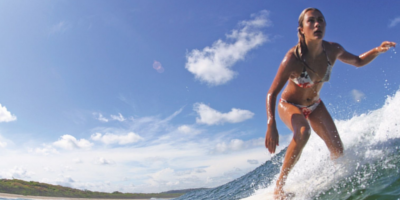
Photo: Visit Costa Rica
Travel is all about learning experiences, right? So why not try something that will probably be really difficult at first, but so rewarding when you finally get it? Costa Rica literally translates to “rich coast,” so you can’t really visit without getting yourself in the water, preferably on a surfboard.
Dominical, a beach town in the Pacific-fronting Puntarenas province, is one of the best places for water activities like surfing. It’s world-renowned for its waves, and surfers come from all over to experience them. Just walk through the town, and you’ll find a handful of shops offering surf lessons with local instructors. Conditions can get rough, but there’s always Domnicalito (or “little Dominical”) right next door, where things stay more mellow.
8. Climbing a volcano.
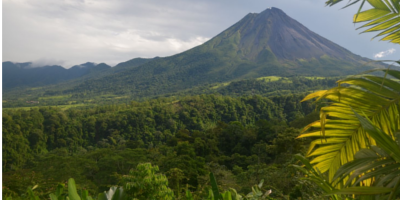
Photo: BonniesPics
Costa Rica has more than 200 volcanic formations. Of these, six are considered active volcanoes, and one of the coolest to visit is Arenal, located in Arenal Volcano National Park in Alajuela province. It’s known as one of the most active volcanoes in the world, though it appears to be “resting” currently (a common state for active volcanoes).
Chato, a smaller volcano on the south side of Arenal, is technically the one you can climb. While it’s not as tall (3,740 feet compared to Arenal’s 5,480), it’s still very much so a badge of honor, and it leads to a beautiful green-hued lake. Access the trail from either the Arenal Observatory Lodge or La Fortuna Waterfall — either way, the terrain turns from lowland rain forest into cloud forest, and you’ll be absolutely up to your elbows in flora and fauna. Keep an eye out for coatimundi (Costa Rica’s “raccoon”) and epiphytes, the flower you could swear is an orchid growing on that tree.
9. Rafting some serious whitewater.
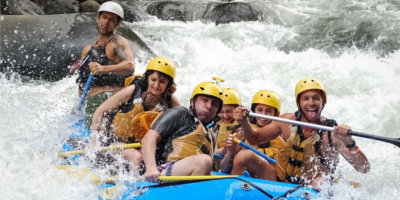
Photo: Igorgalli
Whitewater rafting is one of the premier adventure experiences in Costa Rica. You can choose your difficulty level — dependent on location and timing — based on how extreme you’re looking to go, your rafting experience, and the ages of your travel companions. Some of the best rivers for whitewater rafting are the Pacuare, Balsa, Turrialba, and Toro.
Regardless of where you choose, rafting is a fantastic group activity, and you’ll grow to feel a sense of camaraderie with your team members, even if they started out as strangers. Oh, and upper-body workout? Yeah.
10. Leaping from a rope swing into a waterfall pool.
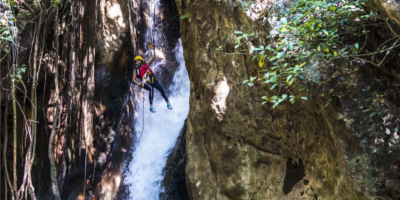
Photo: Visit Costa Rica
Near Arenal Volcano National Park (in Alajuela province) is the 200-foot La Fortuna Waterfall. Once you complete the 20-minute hike to get to the falls, you’ll see the gushing water spilling into the pool below. That right there would warrant the effort.
But there’s more, because someone in the past had a very good idea. Nearby ropes allow you to swing across space and jump off into the water. Hop on, fly off, repeat. If that sounds like a bit much, there are also tours that enable you to rappel down the face of the waterfall.
11. Hanging out on a beach of perfect white sand…

Photo: Spencer Hanson
There are few places in the world that give you such a tremendous variety of options when it comes to beaches. Choose between the Pacific Coast and the Caribbean Coast (or, you know, check ’em both out), and then pick from hundreds of miles of each. Wherever you are, the best beach spots are never far.
Here are a few to get you started: Playa Conchal, Playa Avellanas, and Playa Grande, three popular stretches of sand on the Pacific side. Over on the Caribbean, scope out Playa Bonita and Cahuita — just as renowned, just as “bonita.”
12. …or, hey, black sand might be even more awesome
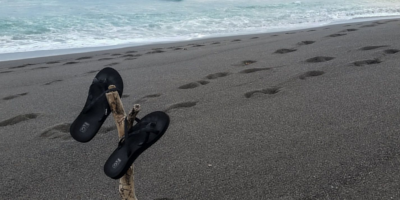
Photo: Jennifer Rogers
Maybe, somehow, you’ve had enough of the usual that comes to mind when you think “beach.” To solve that, head to Puerto Viejo (de Talamanca) on the Caribbean, and look for Playa Negra, which translates literally to “black beach.” The shoe fits, with the sand composed of eroded volcanic deposits that give it a charcoal color. Definitely visit on a cooler day, or bring a good pair of shoes (or both), since the beaming sun on top of black sand can make the temperatures a little too hot for bare feet to handle.
Pro tip: Costa Rica actually has several “black sand” beaches, though some are blacker than others. Playa Negra in Los Pargos, Playa Panama, Playa Hermosa, and Pavones all fit the descriptor.
13. Catching the view from the very top.
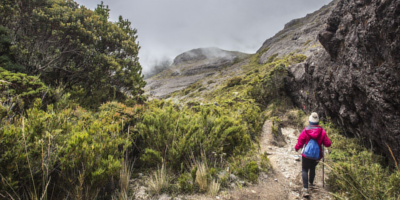
Photo: Visit Costa Rica
At 10,761 feet tall, Chirripó is the highest mountain in Costa Rica. Its name means “land of eternal waters,” referring to the abundance of lakes and streams around the mountain. You can climb it by obtaining a permit from the Chirripó National Park office in San Gerardo de Rivas. From the beginning of the official trail, it’s a 12.1-mile hike to the summit.
The trek takes in over 5,000 feet of elevation gain, so expect a challenge (and to pass through multiple ecosystems — páramos, or treeless plateaus, for example, are unique and can only be found at high elevations in tropical regions.) There are rest stops along the way, though note that the last one is still a two-hour hike from the summit. The view? Totally worth it.
14. Getting a taste of Costa Rican life at a feria.

Photo: Everjean
Pick up a snack or something to take home at a feria, a weekly outdoor market where you’ll find people selling exotic fruits and vegetables, cheeses, baked goods, and souvenirs. They’re everywhere, though the one on Plaza Víquez in San José (Saturday) and the one on Avenida Central and Calle 1 in Santa Ana (Sunday) are particularly bountiful. Vendors set up shop as early as 6am, and by 1pm the offerings will be picked over and the once shoulder-to-shoulder crowds will be gone.
All items available to purchase are locally sourced, so the money goes back into the community one way or another. Here, perhaps more than anywhere else, is where you can tap into the local culture. Most of the people you’ll see perusing the goods are Ticos, picking up fresh supplies for their restaurants or family meals.
15. Witnessing the miracle of life
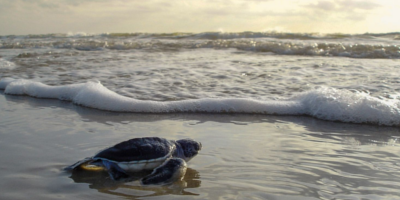
Photo: Skeeze
Playa Pacuare covers a long, sandy stretch of 4.4 miles, but more impressive than its size are its seasonal visitors: leatherback, hawksbill, and green sea turtles. The turtles’ nesting season is anywhere between March and October, depending on the species. If you visit during the right time, you may be able to see hundreds of mother turtles emerging from the Caribbean to lay their eggs, or, later, baby turtles hatching and making their way into the water.
To arrange a visit with a higher chance of seeing a hatching, contact one of the local conservation programs. You might even be able to volunteer and get a closer look. Whatever you do, though, make sure to follow instructions and give these creatures — and their gorgeous nesting grounds — the respect it deserves.
Matador Url: https://matadornetwork.com/read/15-experiences-costa-rica-die/
